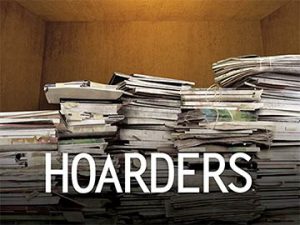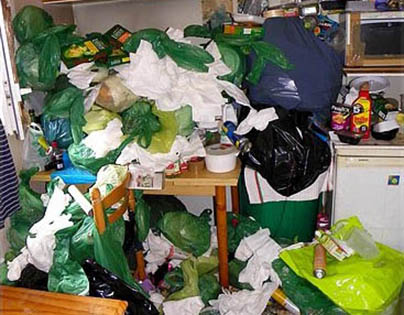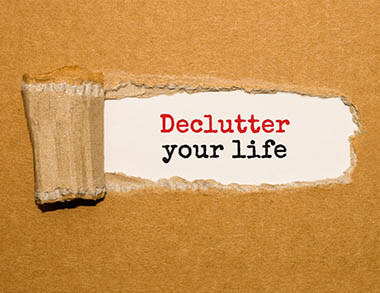Hoarding in the Media: Analyzing How Compulsive Collecting is Perceived to the Masses
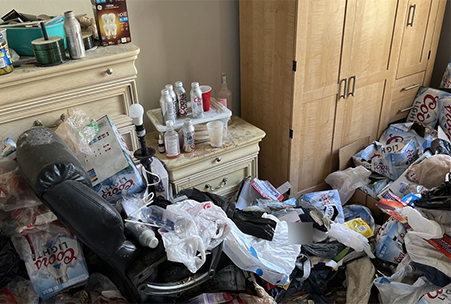
In modern times, hoarding is recognized as a mental health disorder that affects an individual’s ability to collect and discard items. The media has had a long-term hold on influencing public opinion about hoarding disorders through the spread of information. Whether it has been good or bad is up to dispute.
Hoarding has been covered by the media since the early 19th century. Today, the public’s opinion on hoarding has been largely impacted by docudramas, reality TV shows, movies, and even social media.
Hoarding issues affect every area in the world, however, it is most prevalent in first-world nations like the United States. It’s not clear why first-world nations are mainly affected, however, it could be the global perception of American reality shows. In general, reality shows depict American culture disproportionately. Their dramatic nature can be inaccurate and overshadow important information from being promoted. Reality shows can also normalize unhealthy habits with a double standard–it sends the wrong message.
Depictions of Hoarding in the Media
Since the early 20th century hoarding has been represented in newspapers, major news networks, movies, and TV shows. Some of the following include famous hoarding stories throughout history:
- The Collyer Brothers (1947)
- Hoarders (2009)
- Tidying Up with Marie Kondo (2019)
The Collyer Brothers (1947)
Long before hoarding was recognized as a mental health problem that could be potentially fatal, the New York Times announced the Collyers Brothers were found dead in their hoarded apartment in 1947. The Collyer Brothers were from an affluent family living in the Harlem community of New York City.
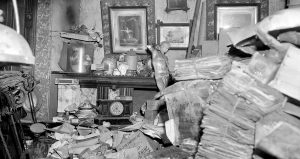
Stacks of newspapers, along with other personal items presumably inherited by the Collyer Brothers, 1947.
The two brothers were always known in the local community for being eccentric, however they became known as neighborhood recluses shortly after both their parents passed away and Homer Collyer lost his eyesight. This led Homer’s brother, Langley, to become the sole caretaker of his brother. The Harlem neighborhood was also changing greatly during this time, which may have contributed to Langley becoming less and less present.
One day a neighbor reported decomposition smells emanating from their Harlem apartment. Police came to find the brownstone apartment mostly boarded shut. It took hours for them to figure out how to enter, mostly by removing a large amount of clutter and junk that blocked a window on the upper floors.
Finally, the police broke in and eventually found Homer dead in a chair. Initially thinking his brother had fled out of guilt, a tri-state search was launched looking for Langley. Weeks into cleaning out the 140 tons of junk that cluttered the Collyer apartment, they discovered Langley had died after getting caught in a booby trap he had set up in one of his tunnels of junk.
Their story was heavily covered by the New York Times and other local papers. It is widely thought to be the earliest depiction of hoarding in American media.
Hoarders (2009–)
When you hear the word “hoarding” it’s natural to think of Hoarders (2009–), the documentary reality TV series made popular by A&E. Indeed, with over 13 seasons the reality show has become an extremely popular staple for reality TV in the US. The series depicts real life stories centering around Americans suffering from compulsive hoarding disorder.
While the show has helped bring awareness to mental health and shed light on those suffering in silence, some depictions can be limiting. These limitations can perpetuate outdated, negative stereotypes, can send the wrong message, and can even be considered commercial exploitation.
Commercial exploitation occurs when a situation, individual or group is used to further one’s financial gain. Vulnerable people tend to be most at risk, including those depicted on the show as suffering from compulsive hoarding disorder. These individuals are facing true disruptive distress and although some receive help, their living conditions and experiences are exploited in the media without their consent. This opens the potential for further damage, emotional distress, and prejudice against those struggling with compulsive hoarding disorder.
Tidying Up with Marie Kondo (2019)
In 2019 Netflix released a reality TV series called Tidying Up With Marie Kondo. The show features host Marie Kondo–a Japanese organizing consultant–who helps individuals seeking to declutter and tidy up their homes.

Photo of Marie Kondo at RISE Conference in 2016.
The show is targeted to individuals with hoarding tendencies (not to the point of compulsion) and those who are simply looking for tips to properly organize. Kondo provides practical advice and strategies on how to declutter and organize, while also informing about the different aspects of hoarding. Kondo provides tips to recognize the warning signs in loved ones and provides information on what compulsive hoarding disorder is like from an emotional and psychological aspect.
The show has greatly helped promote positive resources and mental health resources for individuals or families of individuals affected by compulsive hoarding disorder. It is also cited as a reference for its ability to inspire, declutter and organize homes.
Tidying Up with Marie Kondo is a great resource for those who seek to tidy up for spring cleaning. If you’re seeking tips as well, you can check her show out on Netflix, and check out decluttering tips the NCSC crew has put together.
The Perception of Hoarding in Social Media
A crew of NCSC’s crime scene cleaners, dubbed The Soul Mediators on Tiktok, have amassed a following of over 215,000 followers from posting their experiences cleaning crime scenes and helping hoarders. At a whopping 223.8k likes and 23.2k shares on one of their hoarding Tiktoks, The Soul Mediators have proved that hoarding is an interesting, popular subject in American culture. Many are fascinated by the shock value, extreme conditions, and bizarre items like the one below:
@thesoulmediators ⚠️☣️ GRAPHIC CONTENT ACCOUNT WARNING ☣️⚠️ ☣️this is a biohazard crime scene cleanup account ☣️this is for educational purposes ☣️this is reality and everything you see is real ☣️I don’t know how else to warn them TikTok🤷🏻♂️ ‼️CHECK THE LINK IN OUR BIO‼️ – link titled “call for biohazard & hoarding cleanups only” is exactly what it says it is! If you, a loved one, or someone you may know, may be in need of the help you see that Junior and I provide, please give that number a call! Whether it be #biohazard or #hoarding #thesoulmediators would be proud to help ❤️ We hope you all had a beautiful Easter weekend with family & loved ones. Thank you all for watching! God bless ❤️🙂 #fyp #hoarder #hoardcleanup #cleanupcrew #wethebest #fypシ #work #life ♬ original sound – Tom and Junior
The piles were so encumbering that it took NCSC and The Soul Mediators four days and four filled dumpsters to clean. Their shock is shared amongst the Tiktok community:
“It’s crazy. We’re not numb to this, so when I say it and people are like, ‘Oh my God,’ I feel the same way. […] I’m not a doctor, but you can tell […] this isn’t normal. Hoarding the alcohol, refilling the cans with urine, and hoarding that – it is very, very clear that something is very wrong. […] This person’s struggling. ”
– Tom, The Soul Mediators (DailyNews)
Media Coverage Can Be A Double Edged Sword
The media has certainly shaped–and continues to shape–public perception of hoarding and mental illness in general. Modern journalism has come a long way in destigmatizing mental health conditions, however certain coverage can have both positive and negative aspects.
- Good coverage has helped bring mental health issues to the surface, meaning the pool of mental health help is slowly becoming more accessible and normalized.
- Bad coverage brings attention to outdated, ignorant, and stigmatized mental health opinions, which perpetuates negativity.
- Overcoverage can also normalize behavior, which can send a wrong message that it’s okay to live under such conditions.
It is important that media depictions of compulsive hoarding are done in a respectful and compassionate manner, so as to not exploit or stigmatize those affected by the disorder. It’s also equally important to read and research hoarding behaviors separately through reputable associations. There are many reputable organizations like:
- The International OCD Foundation (IOCDF)
- The National Institute of Mental Health (NIMH)
- The American Psychiatric Association (APA)
If you believe a loved one may be suffering in silence as a result of hoarding, don’t attempt to clean the home or residence yourself.
Severe hoarding situations can be considered biohazards and contain many hazards. If you’re in this situation now, call NCSC, a reputable and experienced emergency biohazard cleaning company of over 20 years. We are a team of professionals driven to make a difference in lives, families and communities.


